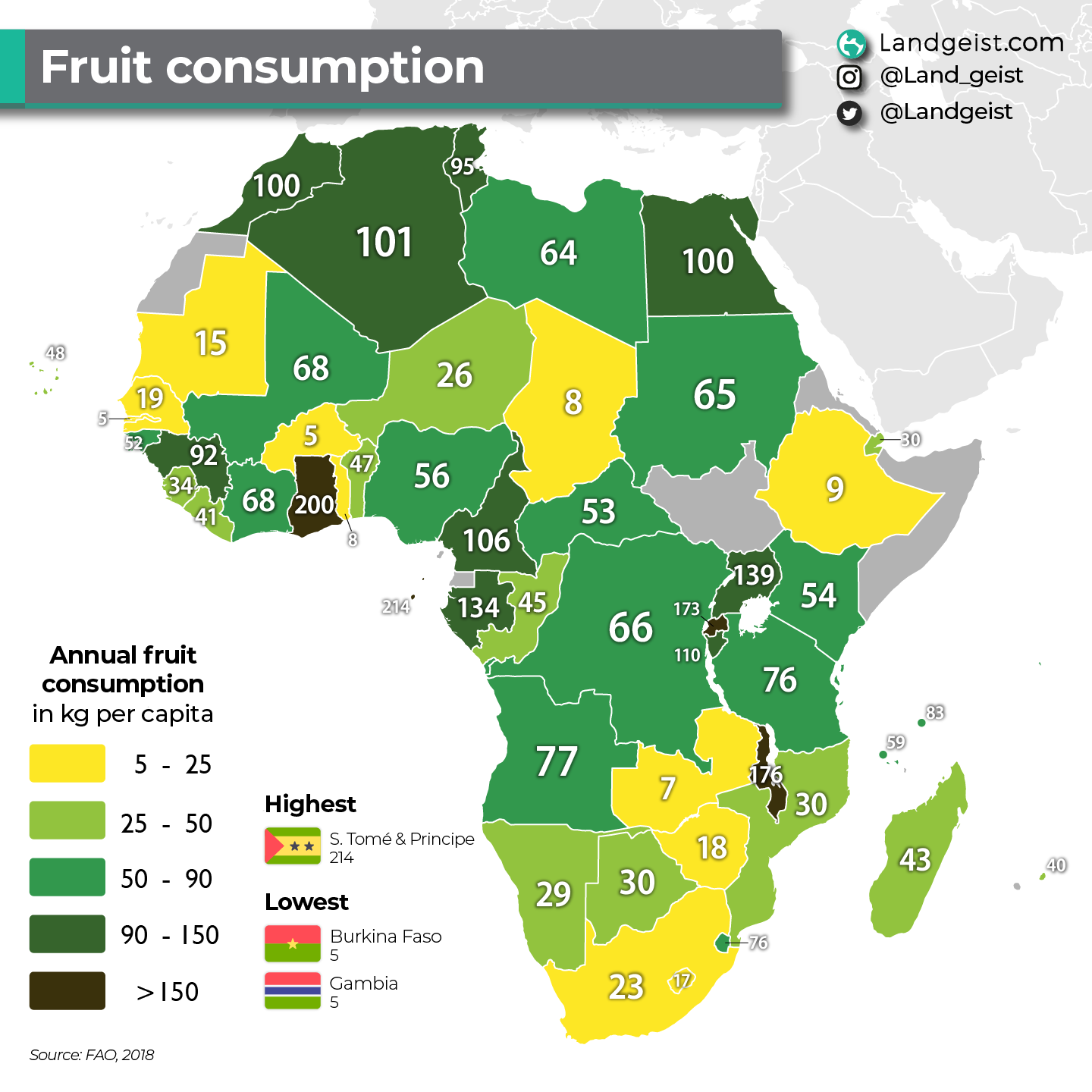How many kilograms of fruit do people in Africa eat every year?

Like this map and want to support Landgeist? The best way to support Landgeist, is by sharing this map. When you share this map, make sure that you credit Landgeist and link to the source article. If you share it on Instagram, just tag @Land_geist. On Twitter tag @Landgeist.
The WHO recommend adults to consume at least 400 grams of vegetables and fruits every day. The CDC recommends at least 1.5 cups of fruit per day. We already learnt that a daily intake of 240 grams of vegetables is recommended. Taking the recommendations of the WHO and CDC in mind, that would mean an estimated intake of 160 grams of fruit per day is recommended for adults. Per year this is 58.4 kg.
The biggest consumers of fruit per capita in Africa is São Tomé and Príncipe, where people consume an average of 214 kg of fruit per capita per year. Ghana comes in second, with 200 kg of fruit. Malawi is third, with 176 kg.
The lowest fruit consumption can be found in Burkina Faso, Gambia (5 kg), Chad and Zambia (7 kg).
Curious about the fruit consumption in other continents? Have a look at these other maps of Asia, South America and Europe that I’ve made before.
But how exactly does the FAO define fruits? It probably matches mostly with what you would consider a fruit. Juices and fried fruits are also included. However, there is one interesting exception. Melons and watermelons are not considered a fruit by the FAO, but a vegetable. Yes, the FAO considers melons and watermelons to be vegetables. This is the FAO’s explanation: “Although melons and watermelons are generally considered to be fruits, FAO groups them with vegetables because they are temporary crops”. Want to see the full list? Have a look here.
